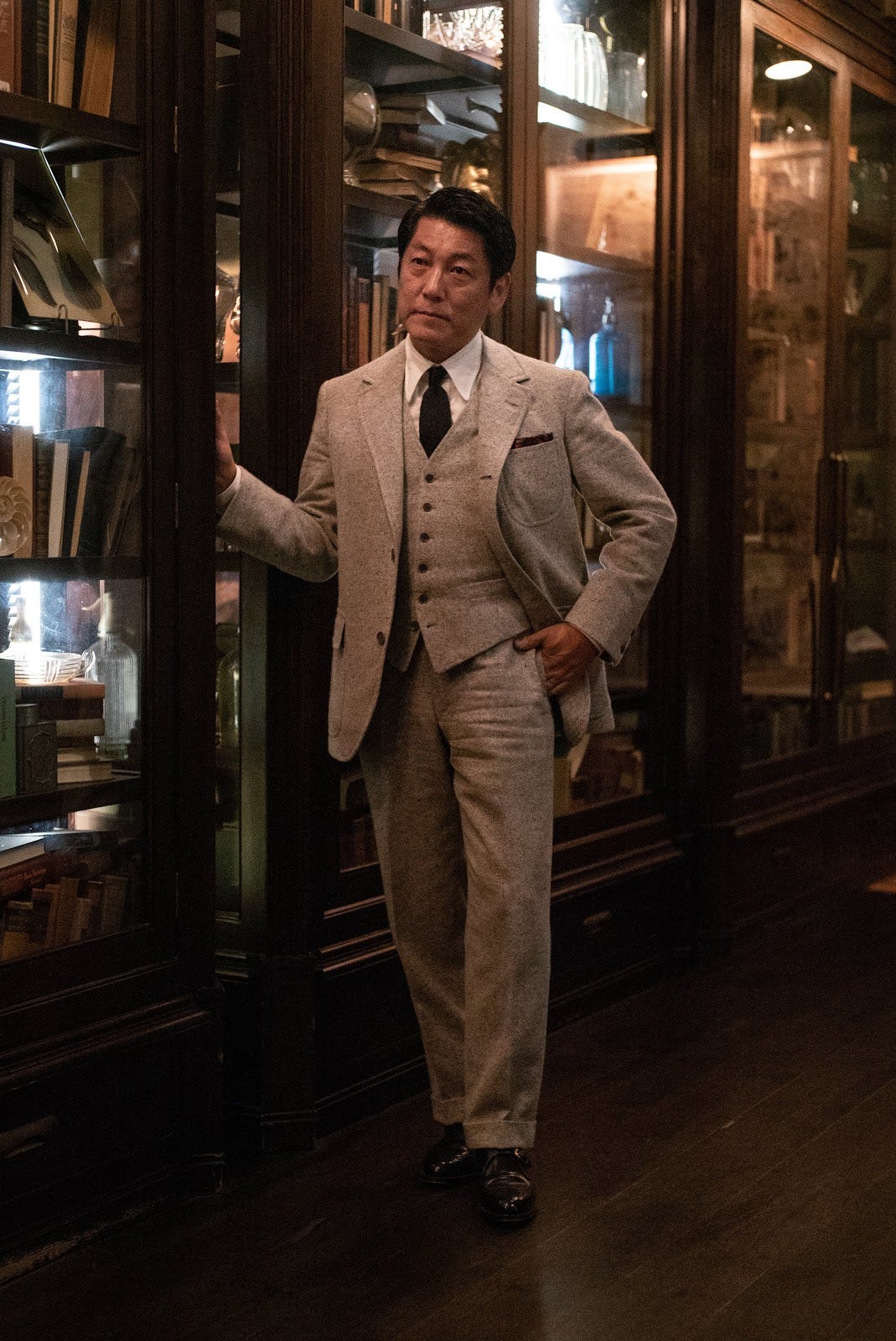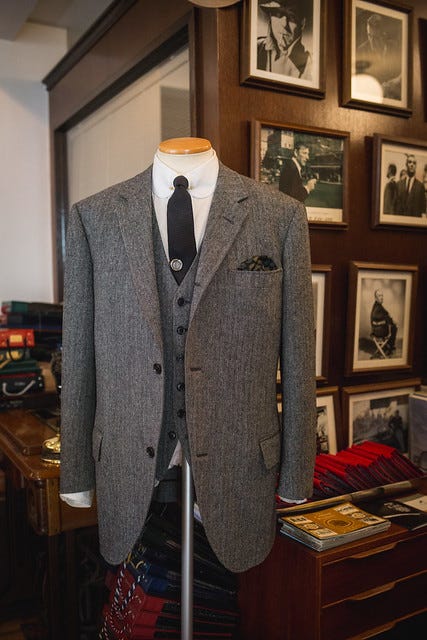Why is this interesting? - The Tailor Edition
On tailoring, Japan, and the crossing of cultural boundaries in bespoke suit making
Colin here. Technology sits at the pinnacle of culture today. Engineers and designers shape our world through the way we interact with their digital products, and endless Hacker News threads talk of code as if it’s the highest form of art currently in practice. Despite that, there are still plenty of analog crafts that are at least equally interesting and well worth your attention. Bespoke tailoring is one that has fascinated me for some time. It’s an age-old skill that relies on experience, seeing a lot of scenarios (and body types), and developing a house style. It is true art: Playing out in fabrics and dimensions (three of them). I’ve long been a fan of the English Savile Row tailors for many reasons, including their refusal to compromise on the process (even in the face of price pressure), the long apprenticeship required to even begin to work on a suit, and the traditions and cuts that vary from shop-to-shop. A trained eye could recognize the military bearing of a Huntsman silhouette, or the softer shoulder of the Anderson and Sheppard style.
Also of interest is the cross-pollination of methods and influence around the world. Wonderful things happen when people go and train elsewhere. According to Permanent Style, Noriyuki Ueki, better known as Ciccio, “has become the best known of a new wave of Japanese tailors that have gone to Italy in the past 20 years, trained, and come back.” His work takes the softness of Neapolitan tailoring with Japanese attention to detail. Another incredible example is Yuhei Yamamoto, known as Tailor Caid, who is a cult Japanese bespoke suit maker that is obsessed with styles of a certain time and place. There is a fascination in Japan with Ivy League style, well-documented in W. David Marx’s book Ametora, but Caid said his interests were more of a time capsule of American business:
“My inspiration is not college style, but the world of businessmen on Madison Avenue,” he said. “When I was a child and American TV shows began being imported into Japan, I thought the styles were just amazing.” In the photo above, the mannequin wears a replica of the brown herringbone jacket Steve McQueen wears in “Bullitt.”

Why is this interesting?
The very nature of fashion is fluid. New trends and movements are intended to keep people buying as much as possible season after season. But when you look at what Tailor Caid makes, it is very precise and aesthetically uncompromising in the best way. According to a wonderful piece about the process of getting clothing made with Caid, Ethan Wong discusses Caid’s unique aesthetic:
...His house style, which is a classic 3-roll-2 sack suit. The lapels are a happy medium, going in between the slim mod ones and the wider models from the late 50s or 70s. While it is clear that his favorite style is ivy/trad, he reminded me that he can make anything...

It is true mastery of form and aesthetic down to the button placement on the back “club collar” of a shirt style popular in 1910, while not losing sight of the need to provide the customization that bespoke customers want. And his motto, sewn on the tags of the clothing, hits the spot: “We’re not fashion snobs but we know a few simple rules.” How very refreshing. You can visit him at his workshop in Tokyo, and friends of WITI, The Armoury, also host him for fittings at their outposts in New York and Hong Kong. (CJN)
Recommendation of the Day:
Speaking of design, I love the work of Ilse Crawford, who had designed some of my favorite spaces like Ett Hem in Stockholm, a wonderful hotel that feels like a private home, as well as the Cathay First and Business lounges in many of their key markets. Her introduction to the book A Frame For Life is a wonderful treatise on human-centered design, and it is also an interesting look into how she designed her own personal space as well as countless other commercial projects. (CJN)
Quick Links:
The connection to today’s topic was too good not to share this excellent newsletter from Vicki Boykin on the connection between sewing and machine learning. Particularly fascinating to me (and her) was to learn that sewing is something we still haven’t figured out how to automate. “I was absolutely floored by this. I consider myself a (relatively) educated person, but I simply had no idea that mostly people were making my clothes.” (NRB)
How [friend of WITI] Naveen keeps track (CJN)
Thanks for reading,
Noah (NRB) & Colin (CJN)
PS - Friend of WITI Steve Bryant (4/22 - Maslow Edition) is looking for a full-time content strategist to join his Brooklyn-based team at Article Group. “Experience overseeing content requirements, conducting content audits, performing gap analyses, and building client presentations is a must.” If you are that person or know someone who is, please make sure to mention you found the job here. Steve said he’d buy us dinner if we help him find someone.
Why is this interesting? is a daily email from Noah Brier & Colin Nagy (and friends!) about interesting things. If you’ve enjoyed this edition, please consider forwarding it to a friend. If you’re reading it for the first time, consider subscribing (it’s free!).


